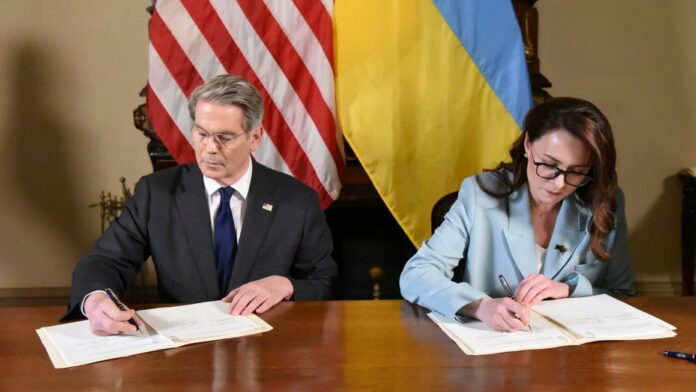The United States and Ukraine signed a long-anticipated minerals agreement in Washington on April 30, 2025, formalizing a new era of economic partnership as Kyiv seeks to secure continued American backing in its war against Russia. The deal, known as the United States-Ukraine Reconstruction Investment Fund, gives the US preferential access to new licenses for Ukraine’s critical minerals, oil, and natural gas, while also establishing a jointly managed investment fund for Ukraine’s post-war reconstruction.

Negotiations for the deal were protracted, with previous drafts criticized as exploitative of Ukraine’s resources and sovereignty. However, the final version, praised by Ukrainian Prime Minister Denys Shmyhal, ensures that Ukraine retains “full control over subsoil, infrastructure, and natural resources,” and does not create debt obligations for Kyiv. Instead, the agreement pledges a long-term strategic alignment, with the US providing financial and military support in exchange for access to Ukraine’s vast mineral wealth.
Under the agreement, Ukraine will allocate 50% of revenues from new resource licenses to the investment fund, which will be used for reconstruction and economic development. The US is expected to contribute through direct investment and new military aid, with the fund’s profits and revenues being reinvested in Ukraine during the first decade of operation. The pact is seen as a “historic” economic alliance, with US officials framing it as a strong signal to Russia of American commitment to Ukraine’s long-term prosperity and sovereignty.

While the deal grants the US significant access to Ukraine’s critical minerals-including titanium, lithium, graphite, and rare earth elements vital for AI, EV batteries, and defense-the Ukrainian government emphasized that all extraction and licensing decisions remain under Kyiv’s control. The agreement is also intended to attract global investment and accelerate Ukraine’s economic recovery, particularly as supply chain disruptions with China have made alternative sources of rare earths and strategic materials increasingly important
























